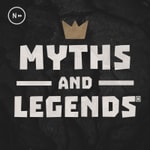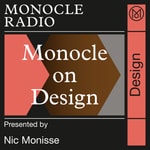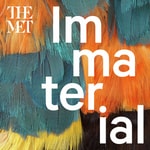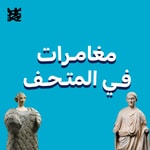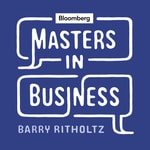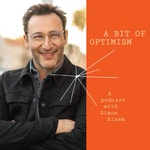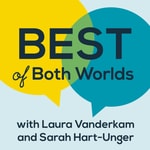Frame of Mind – Détails, épisodes et analyse
Détails du podcast
Informations techniques et générales issues du flux RSS du podcast.
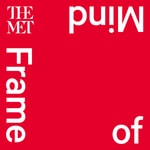
Frame of Mind
The Met
Fréquence : 1 épisode/74j. Total Éps: 13

Classements récents
Dernières positions dans les classements Apple Podcasts et Spotify.
Apple Podcasts
🇬🇧 Grande Bretagne - visualArts
01/08/2025#91🇨🇦 Canada - visualArts
31/07/2025#83🇬🇧 Grande Bretagne - visualArts
31/07/2025#62🇨🇦 Canada - visualArts
30/07/2025#61🇨🇦 Canada - visualArts
29/07/2025#32🇬🇧 Grande Bretagne - visualArts
29/07/2025#96🇬🇧 Grande Bretagne - visualArts
28/07/2025#62🇨🇦 Canada - visualArts
18/07/2025#95🇨🇦 Canada - visualArts
17/07/2025#67🇺🇸 États-Unis - visualArts
17/07/2025#73
Spotify
Aucun classement récent disponible
Liens partagés entre épisodes et podcasts
Liens présents dans les descriptions d'épisodes et autres podcasts les utilisant également.
See all- https://omnystudio.com/listener
842420 partages
Qualité et score du flux RSS
Évaluation technique de la qualité et de la structure du flux RSS.
See allScore global : 89%
Historique des publications
Répartition mensuelle des publications d'épisodes au fil des années.
Immaterial: Stone
Saison 1 · Épisode 12
jeudi 18 juillet 2024 • Durée 43:42
Today, Frame of Mind is featuring an episode from another podcast from The Met, Immaterial. Each episode tells the stories of artists' materials to explore how and why people make art.
In this episode, we cover stone. Throughout art museums around the world, you’ll find ancient stone statues of rulers and marble monuments immortalizing noblemen. These objects were made to survive decay and destruction, to remain intact and whole. But from the moment that stone is extracted from the earth, it is bound to become a more fragmented version of itself–chiseled, chipped, and sometimes shattered over time.
In this episode, we examine the many ways that stone breaks. How can a statue’s cracks and cavities tell a more complex story of our humanity?
Guests:
Jack Soultanian, Conservator, Objects Conservation, The Met
Carolyn Riccardelli, Conservator, Objects Conservation, The Met
Robert Macfarlane, nature writer and mountaineer
Erhan Tamur, former Andrew W. Mellon Postdoctoral Curatorial Fellow, The Met
Sarah Graff, Curator, Ancient Near Eastern Art, The Met
Featured artworks:
Tullio Lombardo, Adam, ca. 1490–95: https://www.metmuseum.org/art/collection/search/197822
Statues of Gudea, Neo-Sumerian, ca. 2120–2090 BCE: https://www.metmuseum.org/art/collection/search/329072
https://www.metmuseum.org/art/collection/search/324061
https://collections.louvre.fr/en/ark:/53355/cl010119539
For a transcript of the episode and more information, visit metmuseum.org/immaterialstone
#MetImmaterial
Immaterial is produced by The Metropolitan Museum of Art and Magnificent Noise and hosted by Camille Dungy.
Production staff includes Salman Ahad Khan, Ann Collins, Samantha Henig, Eric Nuzum, Emma Vecchione, Sarah Wambold, and Jamie York. Additional staff includes Julia Bordelon, Skyla Choi, Maria Kozanecka, and Rachel Smith.
Sound design by Ariana Martinez and Kristin Muller.
Original music by Austin Fisher.
Fact-checking by Mary Mathis and Claire Hyman.
Immaterial is made possible by Dasha Zhukova Niarchos. Additional support is provided by the Zodiac Fund.
See omnystudio.com/listener for privacy information.
Art and Medicine
Saison 1 · Épisode 11
mercredi 11 mai 2022 • Durée 16:15
Have you heard people say visiting a museum is good for you? Why is that? Grace Calame-Mars, a Nursing Professional Development Specialist, and Carolyn Halpin-Healy, an Art Educator at The Met, know the first-hand benefit of art in museums as a tool to help our well-being. Hear about the art therapy program they helped organize for medical professionals at NYU Langone Hospital, where close-looking exercises improved clinical observation skills and strengthened empathy, which became especially valuable tools during the COVID-19 pandemic.
Guests: Grace Calame-Mars, nurse educator at NYU Langone and Carolyn Halpin-Healy, art educator
Objects mentioned in this episode:
Pieter Bruegel the Elder (Netherlandish, 1525–1569). The Harvesters, 1565. Oil on wood, 47 x 63 3/4 in. (119 x 162 cm). The Metropolitan Museum of Art, New York, Rogers Fund, 1919 (19.164)
Figure: Seated Couple, eighteenth–early nineteenth century. Mali, Dogon peoples. Wood, metal, H. 28 3/4 x W. 8 5/8 x D. 8 in. (73 x 21.9 x 20.3 cm). The Metropolitan Museum of Art, New York, Gift of Lester Wunderman, 1977 (1977.394.15)
Jacques Louis David (French, 1748–1825). The Death of Socrates, 1787. Oil on canvas, 51 x 77 1/4 in. (129.5 x 196.2 cm). The Metropolitan Museum of Art, New York, Catharine Lorillard Wolfe Collection, Wolfe Fund, 1931 (31.45)
www.metmuseum.org/frameofmind #FrameofMind
See omnystudio.com/listener for privacy information.
Healing Through Color
Saison 1 · Épisode 2
mercredi 2 mars 2022 • Durée 14:22
How can art help us heal? Imagine an elderly mother and daughter resting on a museum bench, taking in the vivid colors of a stained glass window. When artist and poet Annie Lanzillotto recalls this experience with her mother, it was a moment of peace that helped her make sense of her family and life. Hear how, ever since her childhood in the Bronx, art has remained a powerful tool for inspiration and healing through domestic violence, financial hardship, and multiple cancers.
Guest: Annie Lanzillotto, Artist and Poet
Objects mentioned in this episode:
Tiffany Studios (American, 1902–32), attributed to Agnes F. Northrop (American, 1857–1953). Autumn Landscape, 1923–24. Leaded Favrile glass, 132 x 102 in. (335.3 x 259.1 cm). The Metropolitan Museum of Art, New York, Gift of Robert W. de Forest, 1925 (25.173a–o)
Augustus Saint-Gaudens (American, 1848–1907). Diana, 1893–94, cast 1894 or after. Bronze, 28 1/4 x 16 1/4 x 14 in. (71.8 x 41.3 x 35.6 cm). The Metropolitan Museum of Art, New York, Gift of Lincoln Kirstein, 1985 (1985.353)
Alfred Van Loen (American b. Germany, 1924–1993). Chessgame: Liberty versus Slavery. Bronze, various heights 4–10 1/4 in. The Metropolitan Museum of Art, New York, Gift of Joan and Lester Avnet, 1964 (64.155a-p,aa-pp)
www.metmuseum.org/frameofmind #FrameofMind
See omnystudio.com/listener for privacy information.
100 Postcards, With Love
Saison 1 · Épisode 1
mercredi 23 février 2022 • Durée 21:00
Can art reconnect us with those we love, even from far away? Siblings Samy Gálvez and Melina Anderson Gálvez immigrated to the United States from Guatemala many years ago and have spent much of their adult lives apart from each other and their family. Knowing Melina was struggling with isolation thousands of miles away during a Mormon mission, Samy wanted to lend support. He wasn’t sure how to do it until one life-changing visit to The Met. Hear how—over the course of a year—sending 100 postcards featuring artworks from the Museum fostered deeper communication and trust between the siblings.
Guests: Samy Gálvez, MPH, epidemiologist and Melina Anderson Gálvez, editor and designer
Objects mentioned in this episode:
Ganesha statue, 14th–15th century. India, (Orissa). H. 7 1/4 in. (18.4 cm). The Metropolitan Museum of Art, New York, Gift of Mr. and Mrs. J. J. Klejman, 1964 (64.102)
The Unicorn Rests in a Garden (from the Unicorn Tapestries), 1495–1505. Made in Paris, France (cartoon); Made in Southern Netherlands (woven). 144 7/8 x 99 in. (368 x 251.5 cm). The Metropolitan Museum of Art, New York, Gift of John D. Rockefeller Jr., 1937 (37.80.6)
www.metmuseum.org/frameofmind #FrameofMind
See omnystudio.com/listener for privacy information.
Introducing: Frame of Mind
Saison 1
mercredi 9 février 2022 • Durée 01:20
Are you looking for ways to calm your mind and find inspiration? Frame of Mind, an uplifting podcast from The Met, presents all kinds of personal stories about how art supports well-being. Discover how art has the power to connect, inspire, and restore us wherever we are.
Frame of Mind launches Wednesday, February 23, 2022.
www.metmuseum.org/frameofmind #FrameofMind
See omnystudio.com/listener for privacy information.
Art Rooted in the Earth
Saison 1 · Épisode 10
mercredi 4 mai 2022 • Durée 13:41
Can art save your life? According to Virgil Ortiz, an artist from the Cochiti Pueblo in New Mexico, it can. For Virgil, making pottery with traditional materials and methods is a kind of therapy, a fundamental expression of his culture across generations. Virgil describes how the process itself brings him a sense of purpose and connection to his family, including the prayers he recites before he and his nephews dig clay from their ancestral lands. Given this living legacy, it was a significant moment for Virgil to visit The Met for the first time and see his culture represented in the Charles and Valerie Diker Collection of Native American art. Tune in to hear his story about art’s connection to belonging.
Guest: Virgil Ortiz, artist and teacher
Learn more about the Art of Native America: The Charles and Valerie Diker Collection at www.metmuseum.org/diker
www.metmuseum.org/frameofmind #FrameofMind
See omnystudio.com/listener for privacy information.
Composing New Harmonies
Saison 1 · Épisode 9
mercredi 27 avril 2022 • Durée 13:43
Can the art of music bridge differences that separate us? For Reena Esmail, working as a composer is about more than music: It’s about building what she calls “equitable musical spaces” for the performers and the audience. Born to Indian immigrants, she feels passionately that cultural difference can be a source of richness in both life and music. She remembers one memorable sitar concert at The Met that particularly inspired her to work between the worlds of Western and Indian classical music, a joyful combination that refines and uplifts her sense of purpose.
Guest: Reena Esmail, composer
www.metmuseum.org/frameofmind #FrameofMind
See omnystudio.com/listener for privacy information.
Seeing Art Through a Pandemic Lens
Saison 1 · Épisode 8
mercredi 20 avril 2022 • Durée 21:40
How does the pandemic change our interpretation of art? Since lockdown, staff members at The Met have discovered that familiar artworks now appear different in profound and personal ways. For Alison Hokanson, assistant curator in the Department of European Paintings, a painting by Edvard Munch speaks to her need for quiet introspection after so much time isolated indoors with her husband and three children. For Abraham Thomas, Daniel Brodsky Curator of Modern Architecture, Design, and Decorative Arts, a Finnish lounge chair designed to support recovery from tuberculosis reminds him how integral design can be to healing. And for Margaret Golden, a Met docent and retired physician, a medieval Islamic mortar connects directly to the efforts of frontline medical workers saving lives today.
Guests:
Alison Hokanson, assistant curator, European Paintings, The Metropolitan Museum of Art
Abraham Thomas, Daniel Brodsky Curator, Modern Architecture, Design and Decorative Arts, The Metropolitan Museum of Art
Margaret Golden, retired physician and Met docent
Objects mentioned in this episode:
Edvard Munch (Norwegian, 1863–1944). Night in Saint-Cloud, 1893. Oil on canvas, 27 1/2 x 22 1/4 in. (70 x 56.7 cm). The Metropolitan Museum of Art, New York, Private collection (L.2018.2)
Alvar Aalto (Finnish, 1898–1976). “Model No. 41” Lounge Chair, 1931–32. Laminated Birch, 26 1/2 x 24 x 36 in. (67.3 x 61 x 91.4 cm). The Metropolitan Museum of Art, New York, Purchase, Friends of Twentieth Century Decorative Arts Gifts, by exchange, 2000 (2000.3750) © 2022 Artists Rights Society (ARS), New York
Mortar and Pestle made for Abu Bakr ‘Ali Malikzad al-Tabrizi, late twelfth–early thirteenth century. Attributed to Iran. Bronze; inlaid with silver and black compound, Mortar: H. 4 1/2 in. (11.4 cm), Diam. 5 3/4 in. (14.6 cm); Pestle: H. 10 1/2 in. (26.7 cm), Diam. 2 3/8 in (6 cm).The Metropolitan Museum of Art, New York, Edward C. Moore Collection, Bequest of Edward C. Moore, 1891 (91.1.527a, b)
www.metmuseum.org/frameofmind #FrameofMind
See omnystudio.com/listener for privacy information.
Art, Haircuts, and Community
Saison 1 · Épisode 7
mercredi 13 avril 2022 • Durée 15:15
How can a physical space be designed to support well-being? While museum galleries might seem a world away from barbershops, to Josh Livingston, both are places for people to gather and connect. Josh is a Visiting Assistant Professor in the American Studies Department at Bard College, and he’s spent many happy hours exploring The Met with his wife and young daughter, Jude. He also hails from a long line of barbers, and in 2020, he opened Friend of a Barber with his business partners. Built for more than haircuts, Josh’s barbershop is also a vibrant community hub that showcases work by local artists, and welcomes children and pets, too. Learn how for Josh, spaces can be purpose-built to support meaningful connections that impact the whole community.
Guest: Joshua Livingston, barber and visiting assistant professor of American Studies, Bard College
Objects mentioned in this episode:
John Singer Sargent (American, 1856–1925). Madame X (Madame Pierre Gautreau), 1883–84. Oil on canvas, 82 1/8 x 43 1/4 in. (208.6 x 109.9 cm); Framed: 95 3/4 x 56 5/8 x 5 in. (243.2 x 143.8 x 12.7 cm). The Metropolitan Museum of Art, New York, Arthur Hoppock Hearn Fund, 1916 (16.53)
The Temple of Dendur, completed by 10 B.C. Egypt, Nubia, Dendur, West bank of the Nile River, 50 miles South of Aswan, Roman period, reign of Augustus Caesar. Aeolian sandstone, Temple proper: H. 6.40 m (21 ft.); W. 6.40 m (21 ft.); L 12.50 m (41 ft.); Gate: H. 8.08 m (26.5 ft.); W. x 3.66 m (12 ft.); D. 3.35 m (11 ft.). The Metropolitan Museum of Art, New York, Given to the United States by Egypt in 1965 and awarded to The Metropolitan Museum of Art in 1967 (68.154)
www.metmuseum.org/frameofmind #FrameofMind
See omnystudio.com/listener for privacy information.
Art Closer to Home
Saison 1 · Épisode 6
mercredi 6 avril 2022 • Durée 13:33
Does it make any difference where we see art? For one multidisciplinary artist and feminist, it’s crucial—not just because of who sees it, but what stories get told. Meet Amanda Phingbodhipakkiya. Born to Thai and Indonesian immigrants, she studied neuroscience at Columbia and worked at an Alzheimer’s research lab before becoming a full-time artist, educator, and activist. Today, she chooses to display her work in reclaimed urban spaces and to champion the experience and stories of underrepresented communities. Discover what drives her passion for using public art as a tool for change, proudly displayed outside the walls of traditional museums.
Guest: Amanda Phingbodhipakkiya, multidisciplinary artist, educator, and activist
www.metmuseum.org/frameofmind #FrameofMind
See omnystudio.com/listener for privacy information.
